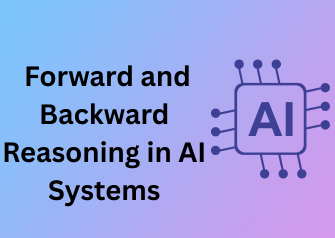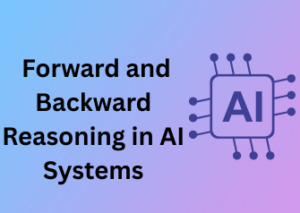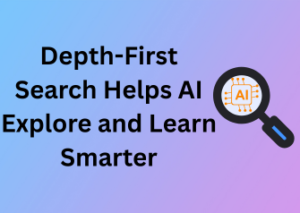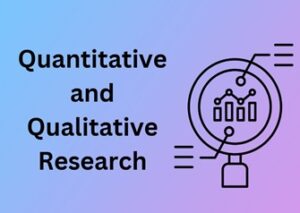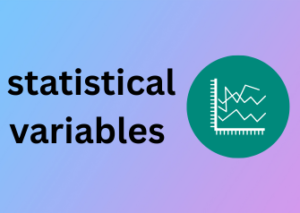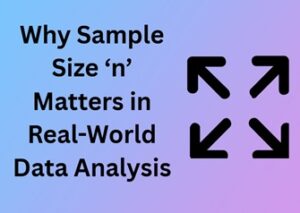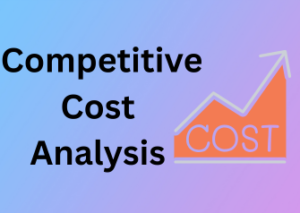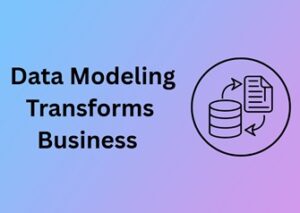Have you ever stopped to think about why humans are so uniquely capable of reasoning and making decisions For centuries, philosophers, scientists, and thinkers have marveled at our ability to sift through data, analyze situations, and draw conclusions. Where does this knack for logic and reasoning come from? Let’s pull back the curtain and explore the fascinating origins of our cognitive processes.
The Evolutionary Advantage of Logical Thinking
Logical thinking didn’t just spring up overnight. It’s the result of thousands of years of evolution and adaptation. Early humans who could observe patterns, predict outcomes, and learn from past experiences were more likely to survive and pass on their genes. For example:
- Noticed certain fruits caused illness? Avoid them in the future.
- Understood seasonal animal patterns? Plan hunting trips accordingly.
These seemingly small decisions built the foundation of logical reasoning. Our ancestors crafted mental “if-then” rules that helped them thrive in an unpredictable world.
The Role of the Brain: Your Built-In Logic Processor
At the center of all our decision-making lies the brain, an extraordinary (and somewhat mysterious) organ. A big chunk of logical thinking happens in the prefrontal cortex, often dubbed the brain’s control center. This area handles planning, problem-solving, and abstract thinking, all key ingredients for logical thought.
What’s fascinating is how interconnected the brain is, logical thinking isn’t just confined to one space. Different regions of the brain collaborate to process information, recognize patterns, and weigh options. Think of it like an orchestra: each instrument has its own part to play, but they all work together to create harmony (or in our case, clarity).
Developing Logical Thinking: Nature or Nurture?
Here’s an age-old debate: are we born with logical thinking skills, or do we learn them as we grow? Truthfully, it’s a bit of both.
- Innate Abilities: Many researchers believe humans are hardwired for basic logic. Babies, for instance, show signs of recognizing cause-and-effect relationships, like shaking a rattle to make noise.
- Environmental Influence: A supportive environment filled with education, problem-solving opportunities, and social interaction sharpens our logical tools. Playing puzzles, engaging in debates, or even learning to fix a broken gadget, these experiences cultivate reasoning skills over time.
The takeaway? While we have a natural inclination toward logical thinking, growing in this area depends heavily on the challenges and stimuli we experience every day.
The Importance of Human Logic Today
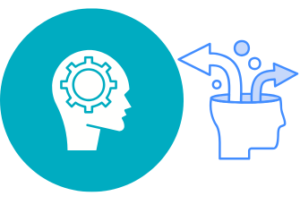
Logical thinking isn’t just a survival mechanism anymore. In today’s complex world, it’s essential. We use it to navigate career decisions, solve complex global issues, and even fix a computer that just won’t cooperate. But here’s the exciting part: understanding how we think doesn’t just help us improve our reasoning, it’s also influencing how we create technology. That’s right, human logic is helping to shape the way machines think. (More on that topic in another section!
Understanding Forward and Backward Reasoning
Have you ever solved a puzzle by starting from the end and working your way backward? Or maybe you’ve tackled a problem step-by-step from the beginning toward the conclusion? These approaches highlight two powerful cognitive strategies: forward reasoning and backward reasoning. Let’s break down these concepts without diving into overly technical details, giving you a clearer picture of how they work and why they’re so useful in everyday situations.
What is Forward Reasoning?
Forward reasoning is like taking a path step-by-step, starting from the known facts (the beginning) and moving logically to reach a solution. This method is often used when the starting point is clear and the goal is to figure out the likely outcome.
Picture this: You’re baking a cake. You have the recipe in front of you, so you follow each step in order — mixing ingredients, baking at a precise temperature, and waiting for it to cool. Each action builds upon the last, leading naturally to delicious results.
Forward reasoning is systematic and ideal when the path from the start to the solution is well-defined. It’s like having a road map guiding you to your destination, step by step.
Now, Let’s Talk About Backward Reasoning
Backward reasoning, on the other hand, is a bit like working in reverse. Instead of starting from what you know, you begin with the goal or conclusion in mind and figure out the steps needed to get there. It’s like reverse-engineering a problem.
Imagine you’ve decided you want to be a published author five years from now. Working backward, you identify what needs to happen: writing consistently, learning about publishing options, finding an editor, and developing story outlines. By reverse-tracing the path, you can break a big goal into manageable steps.
Backward reasoning works wonderfully when you know where you want to end up but don’t immediately know how to get there. It helps to uncover critical steps and dependencies that might otherwise be missed.
Key Differences Between the Two
Understanding the differences between forward and backward reasoning can help you navigate situations more effectively. Here’s a quick breakdown:
- Forward reasoning: Moves from a known starting point to an unknown conclusion. Use it when you have the facts and just need to figure out where they lead.
- Backward reasoning: Begins with the goal and works backward to define the steps to achieve it. Perfect for tackling problems with clearly defined outcomes.
When Should You Use Each Approach?
Deciding which method to use depends on the situation:
- Use forward reasoning: When solving predictable, sequential problems like assembling furniture, following a recipe, or troubleshooting technical issues.
- Use backward reasoning: When planning complex projects, setting long-term goals, or solving tricky puzzles where you know what success looks like but not the steps to achieve it.
Why These Matter
The beauty of these reasoning methods lies in their practicality. By understanding forward and backward reasoning, we can improve problem-solving, clarify goals, and even decode challenging tasks. Best of all, these strategies aren’t just for experts or academics , they’re tools everyone can use. So, the next time you face a tricky situation, ask yourself: Should I work from A to Z , or start at Z and figure out how to get to A?
Go ahead, give it a try! These reasoning approaches make life’s puzzles a little less puzzling!
Understanding How Machines Learn From Human-Like Approaches
When we talk about teaching machines to think like humans, it can sound like something out of a sci-fi movie. Yet, this isn’t just an abstract idea. The concepts of forward and backward reasoning, two distinct ways humans solve problems, play a crucial role in how machines learn. But how exactly do machines adopt these human-inspired processes? Let’s untangle this fascinating intersection in plain, relatable terms.
A Quick Refresher: Forward and Backward Thinking
Before diving in, a quick recap: forward reasoning works step by logical step, starting from available information and leading to a conclusion. It’s like starting at the trailhead of a hiking route and following the path to the summit. Conversely, backward reasoning starts with the goal in mind and works backward to figure out what steps need to happen to get there, like planning a route to the summit from the top down, visualizing how to connect each step.
How Machines Learn From These Processes
Machines, specifically those powered by artificial intelligence (AI), use algorithms, sets of instructions, to model human-like actions. Think of these algorithms as a “how-to” guide, helping machines make decisions or solve problems in systematic ways.
- Forward Reasoning: The machine uses available data to predict outcomes. For example, in weather forecasting, it processes current conditions like temperature, wind, and pressure, analyzing step-by-step to predict tomorrow’s weather.
- Backward Reasoning: Machines often use this in systems like diagnostic AI. Picture medical software: it starts with a target outcome, such as diagnosing a disease, and works backward through symptoms and patient history to deduce possible causes.
Where It Gets Interesting: Machine Learning
Unlike traditional algorithms, machine learning (ML), a subset of AI, takes things further by allowing machines to improve their processes over time. This is where forward and backward thinking really shine.
For example:
- Forward thinking in supervised learning: Think of a machine “learning” to identify cats in pictures. Initially, it starts with labeled data: pictures of cats tagged as “cat.” Using forward reasoning, it moves from recognizing basic features (like pointy ears and whiskers) to making more complex predictions.
- Backward thinking in goal-oriented AI: Imagine AI planning a chess game. It knows the end goal is to achieve a checkmate (the goal), and it works backward by analyzing possible moves of both players to get there efficiently.
The Beauty of Human-Like Approaches in Machines
By blending forward and backward reasoning into their design, machines can tackle a wide range of tasks, from predicting stock market trends to diagnosing patients, or even helping robots navigate unfamiliar environments. These approaches are not perfect, and machines don’t “reason” the way humans do (yet!), but borrowing from human cognitive strategies allows them to perform with surprising accuracy.
Everyday Scenarios Where Forward and Backward Thinking Stands Out
We all think through problems every day, but have you ever stopped to consider how you approach them? You might not realize it, but your brain likely flips between two powerful modes of reasoning: forward thinking and backward thinking. These approaches are like trusty mental tools that help you tackle challenges, big or small. Let’s dive into how they show up in real life and help us shine in different scenarios!
What Are Forward and Backward Thinking?
Before we jump into examples, here’s a quick refresher:
- Forward thinking: This is when you move step-by-step from a starting point to a conclusion. You follow a logical path, like driving along a straight road to your destination.
- Backward thinking: This approach begins with the end goal in mind. You work backward to figure out the steps needed to achieve that goal, almost like retracing your steps to find your lost keys.
Both methods are incredibly useful depending on the situation, and knowing when to use each can make life’s challenges feel way more manageable.
Solving Everyday Problems With Logical Thinking
Let’s start with some relatable examples of forward and backward reasoning in action. You might recognize these from your own life:
1. Planning Your Morning Routine (Forward Thinking)
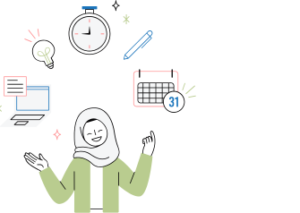
Imagine it’s Monday morning, and you need to get to work on time. You start at the beginning, waking up, and think through each step: brushing your teeth, eating breakfast, grabbing your laptop, and heading out the door. Each task leads logically to the next, eventually landing you at your desk, hopefully before your first meeting. That’s forward thinking in action: one step naturally leads to the next.
2. Figuring Out a Recipe (Backward Thinking)
Let’s say you have a sudden craving for chocolate cake. You know what you want, your end goal, but you need to figure out how to get there. First, you think about what you need: cake flour, cocoa powder, sugar, eggs, and butter. Then you work backward to the starting point of collecting ingredients and following the recipe step-by-step to achieve the perfect slice of cake.
3. Diagnosing a Household Issue (A Mix of Both)
Picture this: your refrigerator isn’t cooling properly. Should you call someone to fix it, or can you resolve it yourself? You might start with forward thinking, checking the temperature controls, listening for any strange noises, and testing the power supply. But if these steps don’t reveal the problem, backward thinking comes into play. To solve the issue, you look at the result you want—food being chilled—and track back potential causes for why it’s not happening. Combining both methods often yields better results.
When to Use Each Approach
So, when should you use forward thinking, and when does backward thinking shine? Here are a few tips:
- Choose forward thinking when the problem requires logical sequencing, like completing a checklist or step-by-step process. This method is great for situations where the path is straightforward.
- Opt for backward thinking when you have a clear goal but aren’t sure how to achieve it. It’s ideal for creative problem-solving or reverse-engineering solutions.
The Role of Algorithms in Learning Patterns Comparably to Humans
Algorithms are the brainpower behind modern technology. They’re the unsung mathematicians, tirelessly working to make your smartphone smarter, your ads more relevant, and your voice assistants less likely to tell you that Sorry, I didn’t quite catch that. But what if I told you their journey of learning isn’t all that different from how humans learn? Let’s dive in and explore how algorithms bridge the gap between our natural reasoning and artificial efficiency!
Defining Algorithms: What Are They Really
An algorithm, in its simplest definition, is just a set of instructions or rules designed to solve a problem. Think of it as a recipe for baking cookies. You gather ingredients, measure them out in the right quantities, mix everything together, follow ordered steps, bake, and voilà cookies! Except, in the case of algorithms, the end result might be a better Netflix recommendation or identifying a hidden face in your photo gallery.
The beauty of algorithms lies in how they mimic human problem-solving techniques to find patterns in the vast sea of data. It’s worth mentioning that when you repeatedly do something like solving math problems or learning a new sport, you’re essentially creating neurological pathways – mental algorithms, if you will. The human brain is just a very sophisticated processing machine, and algorithms aim to replicate some of these decision-making processes.
How Algorithms Learn Patterns
Okay, let’s make it fun: pretend you’re teaching a child how to recognize dogs. You’d probably show them pictures of dogs, point to a furry golden retriever, and say, This is a dog. Over time, that child starts picking up on patterns floppy ears, wagging tails, four legs, possibly a wet nose. Now, are all furry four-legged creatures dogs? Absolutely not. Cats would beg to differ!
Algorithms learn in a similar way, except they’re dealing with digital information instead of wet noses. Through machine learning, which is a specialized branch of artificial intelligence, algorithms process millions of data points to identify patterns and classify information. With a little nudge in the right direction (known as supervised learning), they can tell the difference between a picture of a dog and, say, a confused-looking llama.
Here’s how this magic happens:
- Input Data: Algorithms are fed raw data. This could be text, images, sound, or numbers.
- Pattern Identification: They analyze the information, looking for trends or relationships (e.g., golden retrievers have similar features to pugs despite big size differences).
- Learning Feedback: Algorithms constantly tweak and adjust their logic based on the accuracy of their predictions, much like humans learn from trial and error.
Where Algorithms Excel and Where They Struggle
When it comes to speed and scale, algorithms leave even the sharpest humans in the dust. Imagine trying to sift through a billion data points. No sleep? No coffee? No problem for an algorithm. Whether it’s recognizing credit card fraud or predicting weather patterns, they shine at processing large datasets in record time.
But humans bring something to the table algorithms can’t quite match yet: intuition. Our thinking incorporates emotion, creativity, and the ability to make leaps of understanding without needing every detail laid out. This is why algorithms sometimes struggle with outliers or ambiguous situations, like deciphering sarcasm in a social media comment.
Why It Matters: Creating Human-Like Efficiency
The role of algorithms isn’t to replace human reasoning but to complement it. They help us automate monotonous tasks, uncover insights invisible to the naked eye, and assist in creating more personalized experiences, whether that’s in healthcare, education, or entertainment. But as these systems grow smarter, it’s crucial for us to ensure they remain ethical, unbiased, and as diverse in perspective as the humans they aim to emulate.
Refining AI to Think (Almost) Like Us
Artificial Intelligence (AI) might not have a brain like ours, but it’s inching closer to mimicking our way of thinking. Fine-tuning AI to handle thought-like processes isn’t just thrilling, it’s fascinating. But how do we actually teach machines to think in a way that even remotely resembles human cognition?
The Foundation: What Is Fine-Tuning?
To start, let’s break down what this fine-tuning is all about. When we fine-tune AI, we’re taking a model that’s already pretty smart (thanks to heavy training on large datasets) and helping it specialize in a narrower field. Think of it like giving a jack-of-all-trades a masterclass in one specific skill. This ability to refine a machine’s “thought process” is what allows AI to feel intuitive and adaptable in many applications like virtual assistants, recommendation systems, or even creative tools.
Sound Familiar Because It Mimics Us
What makes this fine-tuning so captivating is how similar it feels to human learning processes. Imagine you’re learning a new skill, like baking. You start with the basics—understanding ingredients, measuring techniques, and some generic recipes. Over time, through repetition and experimentation (maybe burning a few cakes along the way), you adjust and adapt until your skills are finely honed. AI operates in a similar way: broad learning first, specific adjustments and finesse later.
Why Fine-Tuning Matters for Human-Like Thought
The beauty of fine-tuning AI for thought processes lies in its capacity to adapt to very specific contexts. It’s the difference between a general search engine that answers with broad results versus a perfectly tailored chatbot that remembers your preferences, learns from your style of interaction, and offers incredibly spot-on support. These layers of refinement make AI feel much more human-friendly.
To get it right, these three principles are often applied:
- Task-specific learning: Training the AI on highly curated datasets designed for particular industries or contexts ensures accuracy.
- Feedback loops: Incorporating mechanisms where the AI can continuously improve from user interactions creates a sense of growth and adaptability.
- Balancing automation and ethics: Trying to keep AI helpful and unbiased requires fine-tuning not only the data sources but also the guidance frameworks we apply.
Common Applications: Where You’ve Seen This in Action
Chances are, you’ve already experienced fine-tuned AI in your day-to-day life. Think about how Netflix recommends shows you’d absolutely love or how your email client suggests eerily accurate replies to your messages. Fine-tuning allows these systems to not just gather broad patterns but to understand a finer level of nuance, your personal tastes, habits, and even tone in the case of emails.
Challenges: Why It’s Tricky to Think Like a Human
Admittedly, fine-tuning only goes so far. AI lacks emotional intelligence, cultural understanding, and the rich intuition people naturally rely on. While fine-tuning can simulate aspects of human reasoning, true thought-like processes, where emotions, background knowledge, and unpredictability mix—remain outside of AI’s grasp. And maybe that’s okay; after all, we want machines to assist us, not replace us.
What’s Next for Thought-Like AI?
The journey of fine-tuning AI to mimic thought-like processes is just beginning. As researchers continue to refine algorithms and introduce more human-centric datasets, AI will only become more effective at “thinking” its way through tasks. But one thing is certain: the key to building thought-like AI is finding the perfect balance between machine efficiency and human creativity.
And honestly? Watching an AI grow closer to human reasoning while still being unmistakably non-human is part of what makes this area of technology so compelling.
Breaking Myths: How Close AI Truly Gets to Human Reasoning
Artificial intelligence (AI) is a fascinating, often misunderstood topic. For years, popular culture and misinformation have created myths about how AI works and just how human it can truly be. While AI has made incredible strides in mimicking certain aspects of human reasoning, there’s still a gulf between what humans can do naturally and what AI accomplishes, albeit in clever, computationally optimized ways.
AI’s Strength Lies in Speed and Scale, Not Emotion
First, let’s address what AI does exceptionally well: processing enormous amounts of data at breakneck speed. While a human may need hours to sift through thousands of pages of information, AI can do it in moments. That’s its superpower. But here’s the catch: AI doesn’t “think” about this data the way we do. It analyzes patterns, probabilities, and outcomes based on its programming—not intuition or emotion.
Consider this analogy: If human reasoning is like navigating a forest trail with all its twists, turns, and sensory inputs, AI is like a high-speed drone scanning the forest from above. They’re tackling the same problem, getting a sense of the landscape, but in entirely different ways.
Breaking the Myth of Thinking Machines
A common myth is that AI can think just like a human. Let’s set the record straight: AI doesn’t think in the way we understand thinking. Here’s why:
- No Self-Awareness: AI doesn’t have consciousness, self-awareness, or the ability to reflect on its actions. Even the most complex AI systems can only operate based on pre-fed algorithms and training data.
- No Creativity Without Rules: Although AI can generate ideas (like writing poetry or creating images), it relies on patterns and frameworks. Human creativity, in contrast, involves leaps of intuition, abstract connections, and originality that can’t yet be programmed.
- Context Can Be a Blind Spot: Humans excel at understanding nuance and applying abstract knowledge to various contexts. Context that might seem “obvious” to us often needs to be explicitly coded into AI systems, yet they can still miss the mark.
Where AI Gets Surprisingly Close to Us
Despite its limitations, AI comes impressively close to human reasoning in some fascinating ways. For instance:
- Pattern Recognition: AI is great at learning from examples and finding patterns. Think about how AI can identify diseases in medical imaging even when early symptoms might evade a human eye.
- Problem Solving: Systems like chess-playing AIs or language models (like ChatGPT!) can simulate problem-solving processes that mimic human reasoning in tightly defined scopes.
- Probabilistic Decision Making: AI systems use probabilities to make educated “guesses,” which, in structured environments like finance or weather forecasting, can feel eerily like human intuition.
What the Future Holds for AI and Human-Like Thinking
Looking ahead, it’s clear AI will continue to evolve—bridging gaps in reasoning, improving contextual understanding, and maybe even achieving advances that feel closer to human cognition. But one thing remains certain: AI will always be a tool, not a replacement for human ingenuity, empathy, and abstract thinking.

